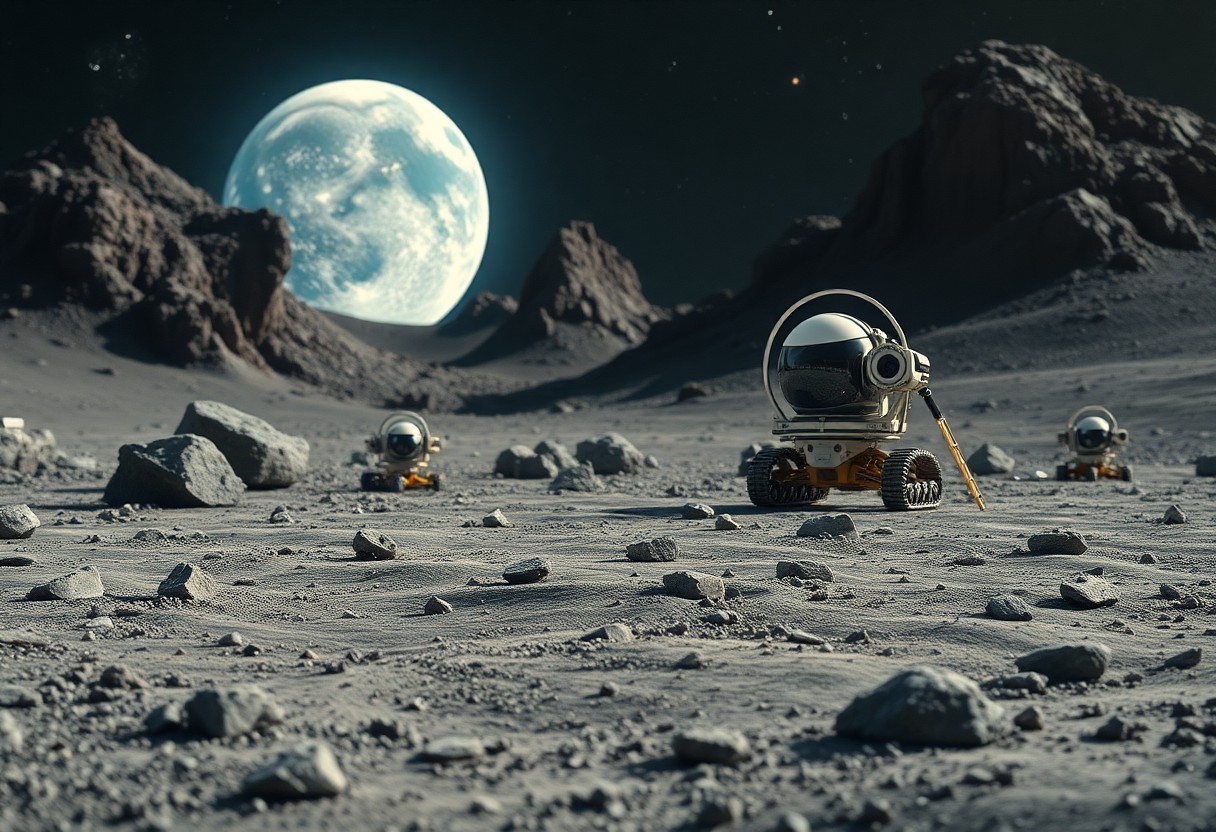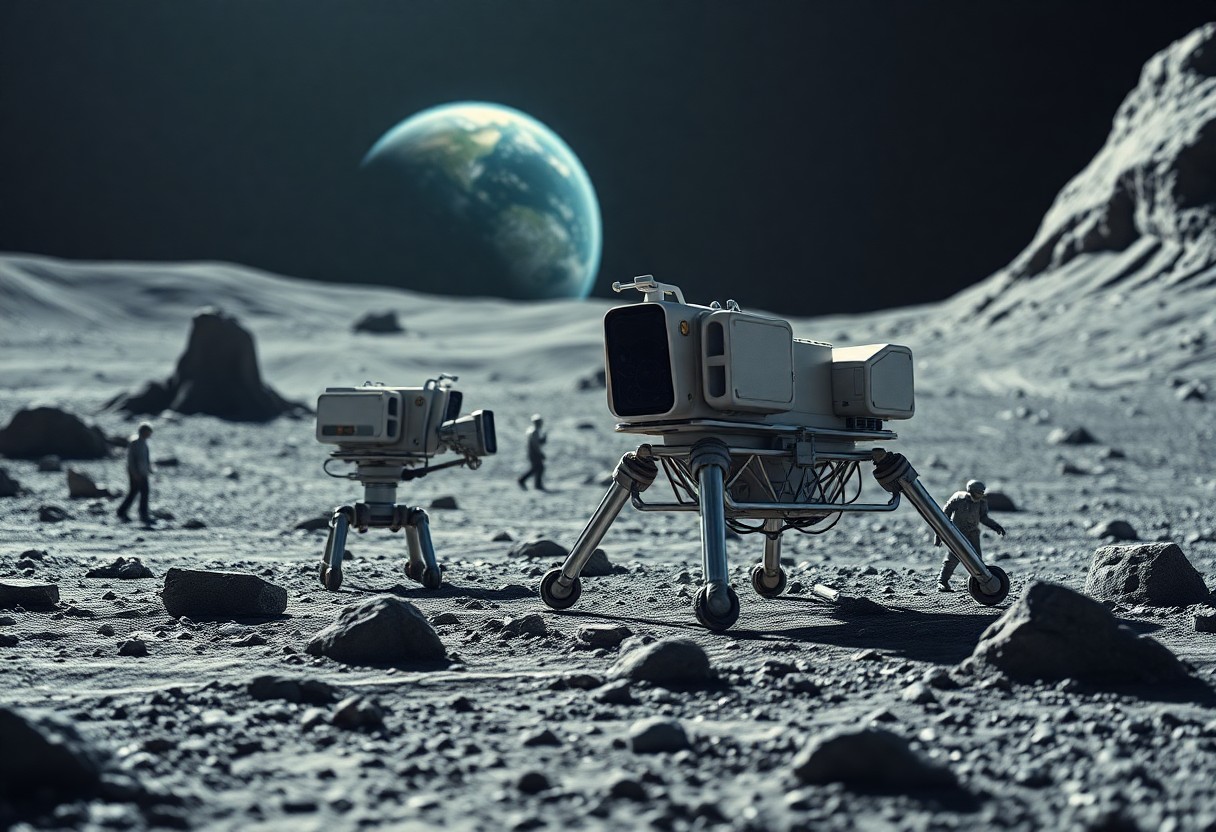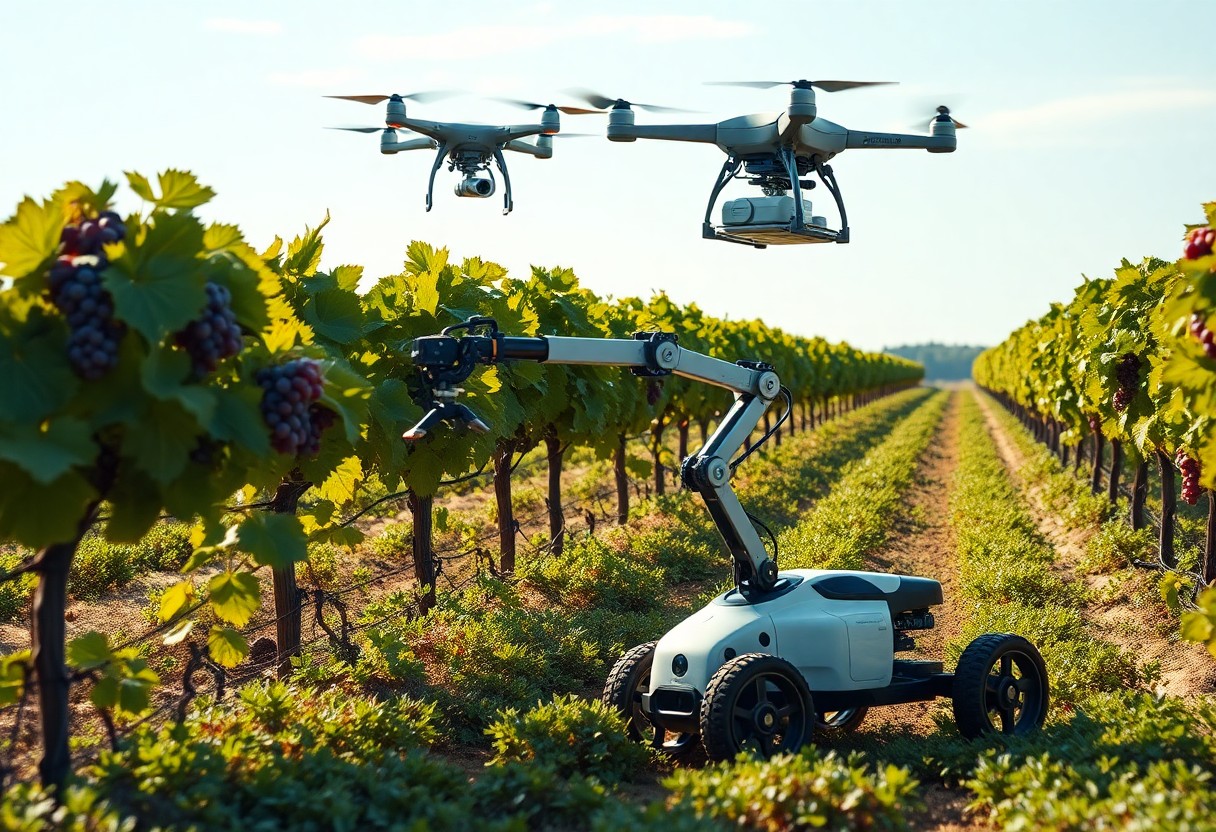With advancements in robotics and space exploration, you may wonder how lunar robots can transform our understanding of the Moon’s geology. These autonomous machines are poised to explore the Moon’s surface and subsurface, collecting valuable data that could unlock the secrets of its formation and evolution. By analyzing the Moon’s unique mineral composition and geological features, you could gain insights into not only lunar history but also the broader dynamics of terrestrial planets. Join us as we explore into how these robotic explorers could reshape your understanding of lunar geology.

The Importance of Lunar Geology
A deeper understanding of lunar geology can illuminate the Moon’s history and evolution, offering insights into planetary formation and processes. As you explore the Moon’s surface, you can uncover evidence of volcanic activity, impact cratering, and geological layering, which all contribute to a broader comprehension of not just the Moon but also Earth and other celestial bodies. By studying lunar geology, you engage with fundamental questions about the universe and your place within it, shedding light on ancient processes that shaped both the Moon and your planet.
Key Geological Features of the Moon
Beside its iconic craters, the Moon features significant geological formations such as maria, highlands, and rilles. These distinct areas reveal the Moon’s dynamic history, from ancient volcanic activity to tectonic shifts. As you examine these features, you gain a clearer picture of the Moon’s geological past, allowing you to appreciate the complex processes that have molded its surface over billions of years.
Historical Perspectives on Lunar Studies
Any exploration of the Moon’s geology begins with centuries of human curiosity and a rich history of observation and study. Scientists, astronomers, and even artists have contributed to the evolving understanding of our lunar neighbor through telescopic observations and, more recently, lander missions.
This rich history of lunar studies stretches back to ancient civilizations, inspiring stargazers and scientists alike. With the advent of telescopes in the 17th century, your perspective on the Moon expanded significantly, leading to detailed mapping and an initial understanding of its surface features. The 20th century propelled lunar studies into new territory, particularly with the Apollo missions that allowed you to gather physical samples and conduct experiments directly on the Moon. As lunar exploration progresses, you continue to build on this foundation, looking to advance your knowledge of geological processes that have shaped not only the Moon but the solar system itself.
The Role of Robotics in Lunar Exploration
You will discover that robotics plays a vital part in lunar exploration by providing the ability to conduct complex tasks in unforgiving environments. These machines can travel further and operate longer than humans, making them necessary for gathering data and conducting experiments on the Moon’s surface. By utilizing advanced robotics, missions can probe deeper into lunar geology, offering insights that enhance our understanding of the Moon and its history.
Advancements in Robotic Technology
At the forefront of lunar exploration are advancements in robotic technology, which have significantly improved the capabilities of lunar missions. Modern robots are equipped with sophisticated sensors, artificial intelligence, and highly maneuverable designs, allowing them to perform intricate tasks. This evolution enables robots to analyze geological samples and navigate challenging terrains, thereby expanding the scope of exploration like never before.
Previous Robotic Missions to the Moon
Robotic missions have played a significant role in our understanding of the Moon’s geology, with various spacecraft sent to gather information about its surface and environment.
And since the Soviet Luna missions in the 1950s and 60s, several robotic explorers have traversed the lunar surface, including NASA’s Lunar Reconnaissance Orbiter and recent landers like Chang’e from China. These missions provided invaluable data on lunar topography, mineral composition, and potential resources, laying the foundation for future human exploration and further unraveling the mysteries of lunar geology.
Potential Discoveries from Lunar Robots
While the development and deployment of lunar robots are still in their infancy, the potential discoveries they could make are immense. These autonomous machines can traverse the Moon’s surface, analyze geological features, and collect valuable data that can reshape our understanding of lunar history. From previously undiscovered minerals to insights about volcanic activity and impact craters, lunar robots could provide you with a comprehensive view of the Moon’s geological evolution. Their findings could also have implications for future lunar exploration and possibly even help you locate resources for extended human presence on the Moon.
Analyzing Soil Samples
After collecting soil samples, lunar robots can employ advanced analytical tools to examine the chemical composition and mineralogy of these materials. This analysis can reveal the Moon’s formation processes and ancient geological events, offering you a glimpse into its evolutionary timeline. The unique properties of lunar regolith contain clues about past conditions, which are vital for understanding not just the Moon itself but also the broader solar system.
Investigating the Moon’s Interior
From studying the Moon’s surface, robots can also facilitate deeper investigations into its interior structure. By using seismic sensors and other geophysical instruments, you can gain insights into the Moon’s mantle and core. This knowledge is crucial for unraveling the complexities of its formation and tectonic behavior.
Due to the Moon’s relatively stagnant geological activity compared to Earth, the interior remains a mystery worth solving. By deploying robots equipped with seismographs and magnetometers, you can explore the Moon’s internal composition and understand how its crust, mantle, and core have interacted over billions of years. Such investigations can illuminate not only the Moon’s own history but also provide comparative insights into terrestrial planets, helping you grasp broader geological processes at play in our solar system.
Challenges Faced by Moon Robots
Now that space exploration has regained momentum, understanding the obstacles moon robots encounter is necessary. These challenges range from extreme temperatures to the complexities of navigating an uncharted lunar landscape. As you explore into the capabilities and limitations of these robotic explorers, you’ll uncover the reasons why efficiently studying lunar geology remains a significant hurdle for scientists and engineers alike.
Harsh Environmental Conditions
The moon’s environment presents a formidable barrier for any robotic missions. With extreme temperature fluctuations, ranging from scorching heat in the day to freezing cold at night, your lunar robots must be equipped with advanced thermal management systems. Additionally, the lack of atmosphere means intense solar radiation and micrometeorite impacts pose significant risks to your exploration equipment.
Communication and Navigation Issues
About half of the challenges faced by moon robots stem from communication and navigation difficulties. The moon’s distance from Earth creates delays in signal transmission, which complicates real-time operations. Your robots must rely on onboard systems to navigate and gather data autonomously, as real-time control may not always be feasible.
Hence, the reliance on pre-programmed instructions and sophisticated algorithms for navigation adds another layer of complexity. With limited line-of-sight communication and potential obstacles affecting signal strength, your robots must utilize autonomous decision-making capabilities to adapt to their surroundings. This independence is key, but also emphasizes the need for highly reliable systems to ensure accurate data collection and successful mission outcomes.
Future Missions and Their Objectives
Many upcoming lunar missions aim to deepen our understanding of the Moon’s geology and history. Innovations in robotic exploration are set to enhance our ability to gather and analyze samples, providing insights into the formation and evolution of both the Moon and Earth. These missions will not only focus on in-situ resources but also explore the potential for human habitation and long-term research opportunities on the lunar surface.
Proposed Lunar Robotic Missions
To advance lunar exploration, several robotic missions are being proposed by various space agencies and private organizations. These missions will utilize cutting-edge technology to study the Moon’s surface, analyze geological samples, and identify potential resources for future human expeditions.
Collaborative Efforts in Lunar Research
Research collaboration among space agencies, academic institutions, and private companies is vital for successful lunar exploration. By pooling resources and expertise, these partnerships can lead to more comprehensive studies and shared advancements, ultimately accelerating the pace of discovery.
Robotic missions present opportunities to engage in collaborative research that extends beyond national interests. By fostering partnerships between countries and organizations, you can contribute to a unified approach to lunar science. This will not only enhance data sharing and analysis but also ensure that your findings benefit a wider scientific community. As you participate in these collaborative efforts, you help to refine methodologies, improve mission outcomes, and drive innovation in lunar geology.
Summing up
With these considerations, you can appreciate the potential of moon robots in advancing our understanding of lunar geology. By leveraging cutting-edge technology and exploration strategies, these robotic systems could reveal previously hidden data about the moon’s formation, surface processes, and geological history. Engaging in this lunar endeavor could enhance your knowledge and contribute to the broader scientific community, unlocking mysteries that have intrigued researchers for decades.







